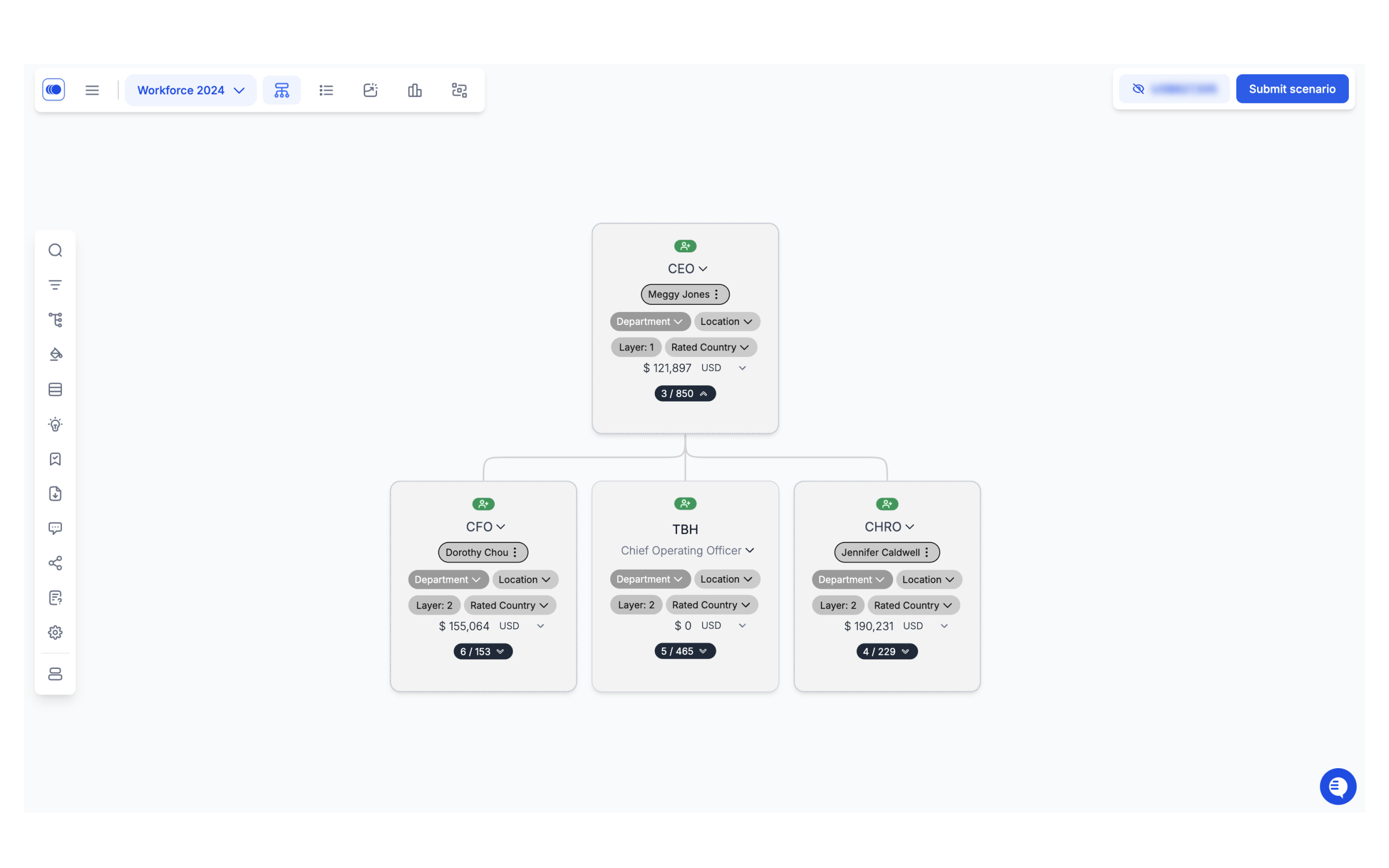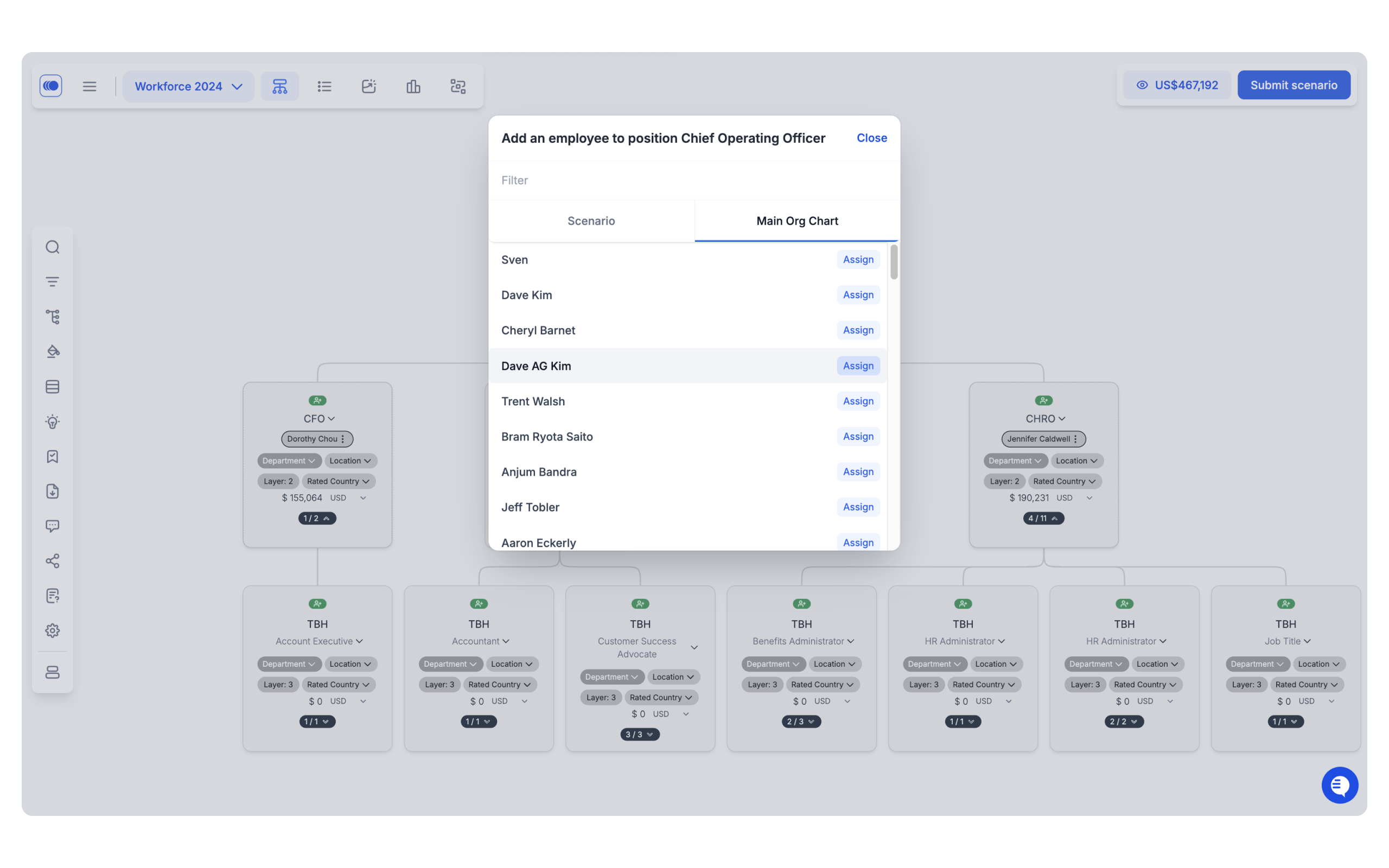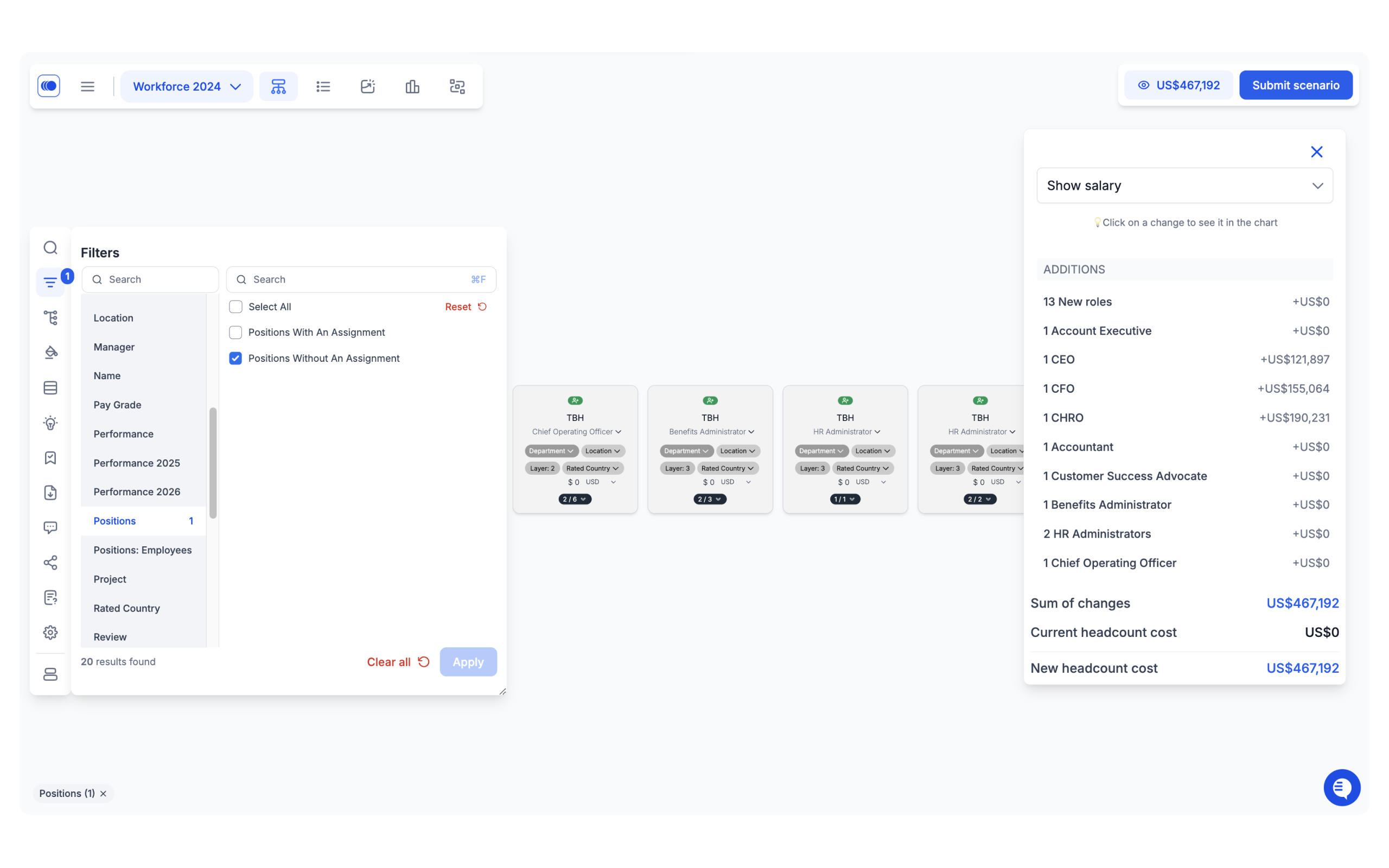Positions vs People
Plan critical positions
Don't let misaligned roles hold back performance. Spot skill gaps, assess readiness, and align roles with talent effectively
Positions Planning
Model clean state
org design
Start with a blank slate. Separate positions from people to build a truly optimized org structure independent of any subjectivity.


Talent Alignemnt
Map talent into current and future Positions
Align talent with the right positions for your current and future needs.
Bench Management
Identify unmapped employees easily
Quickly identify unmapped and benched employees. Stay ahead of talent planning by ensuring no one falls through the cracks - so you can fully utilize your workforce.

FAQs
Positions vs People
Position planning is the process of designing the ideal roles, structures, and capacity your organization needs to meet its goals - regardless of whether those roles are currently filled. It’s about defining what work needs to be done, where, and by what type of role, not necessarily who is doing it yet.
People planning, on the other hand, focuses on managing the individuals already in your workforce - planning future moves based on who is currently in place.
The key difference:
- Position planning is role-centric (focused on the organization’s needs)
- People planning is headcount-centric (focused on the individuals)
With Agentnoon, you can:
- Track open, filled, and future roles in one place
- Compare your designed structure (positions) against your real people data
- Plan growth or restructuring without relying only on existing people
- Align strategic workforce plans with actual hiring and internal movement
In workforce planning, positions represent the structure your organization needs to achieve its goals -whether or not those roles are currently filled.
People, meanwhile, represent the individuals currently occupying roles, with their own skills, performance, and career paths.
If you only track people without separately managing positions, you risk:
- Losing visibility into vacant or future-needed roles
- Overlooking structural gaps or redundancies
- Confusing headcount management with strategic workforce design
Planning position vs people helps you:
- Understand the full organizational design beyond who’s on payroll today
- Plan proactively for growth, backfills, and new capabilities
- Maintain a forward-looking view of what your company needs to succeed
Agentnoon provides a dedicated view to manage and visualize positions planning. You can define, categorize, and track roles - even if they’re unfilled - alongside your people data. This helps HR, Finance, and Talent teams align hiring plans with structural needs.
Yes. Agentnoon highlights mismatches between planned positions and actual people assigned to them. You can:
- Instantly spot vacant positions without assigned people
- Identify positions with shortlisted candidates or pending hiring decisions
- Highlight mismatches between job titles, grades, or reporting lines
- Resolve inconsistencies early - before they impact growth, budgets, or project execution
This ensures your organizational plan stays tightly aligned with your real-world workforce needs.
Visualizing position vs. people shifts workforce planning from reactive to strategic.
Instead of planning only around current headcount, you design the roles your organization actually needs to grow and operate effectively - even if those roles aren't filled yet.
By focusing on positions first, you can:
- Identify critical gaps early, before they impact operations
- Plan hiring and promotions based on future needs, not just current staff
- Build a structure that aligns with business goals, not existing limitations
- Separate short-term staffing pressures from long-term organizational design
Agentnoon helps you visualize both filled and vacant roles side by side - so you can structure your workforce around business priorities, not just available talent.
